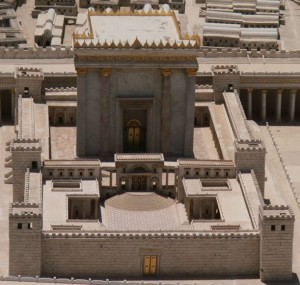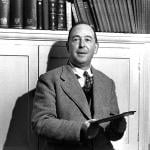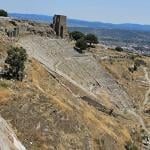 An often overlooked aspect of the Christmas story of Luke’s Gospel is the emphasis on the priesthood. The first character introduced in the story is a priest (Zechariah) who is in the Temple preforming a priestly act (burning incense): Priest, Temple, priestly activity.
An often overlooked aspect of the Christmas story of Luke’s Gospel is the emphasis on the priesthood. The first character introduced in the story is a priest (Zechariah) who is in the Temple preforming a priestly act (burning incense): Priest, Temple, priestly activity.
What’s more, we are told that Mary is related to Elizabeth who is a “descendant of Aaron” – notice not David. So Mary is of the aaronic line. Luke shows that Jesus was “presented to the Lord” by Joseph and Mary in the Temple (Luke 2:22-23). This, Luke tells readers, was in obedience to the commandment of the Torah (2:23). This story is reminiscent of the Samuel story when Samuel’s father and mother (Elkanah and Hannah) dedicated him to the Lord after his miraculous birth (1 Sam 1:21-28). Perhaps the later episode that Luke tells of Jesus in the Temple as an prepubescent (2:41-50) is also meant to echo Samuel’s place in the Temple as a young boy ministering before the Lord (1 Sam 2:11; 2:18; 3:1).
Interestingly, however, first-born male Israelites did not need to be dedicated to the Lord. Although in the wake of the Exodus, God commanded that the first-born males from every womb be dedicated to the Lord, the tribe of Levi had taken the place of all the first-born males of Israel (Num 3:11-13). Numbers 18:15-16 states that parents are to pay a five shekel redemption price for the first-born, but it was not required to dedicate them to the Lord. Thus, it could be that Luke is painting Joseph and Mary as overly scrupulous keepers of the Torah or perhaps there’s a hint of priestly identity in the dedication. I have to say, I’m woefully ignorant of the Second Temple Jewish practice of first-born son dedication. Perhaps someone else can shed some light on this particular point.
In all events, my reflection here is meant to call attention to the place of the priesthood and Temple in the life of Jesus. This centrality is indeed reflective of the central importance of the these Jewish institutions in the life of first century Jews.
My point: We will understand little about Jesus’ Jewish culture and world if we don’t appreciate the place of the Temple and priests in the life of ancient Jews.
Lester Grabbe puts a fine point on it in his book An Introduction to Second Temple Judaism when he writes:
What is often overlooked is the important place occupied by the priests in Jewish society, Jewish religion, and scriptural interpretation. Through much of the Second Temple period the priests headed the administrative structures of the community, even holding the office of king during the period of Hasmonaean rule. The were also the ones with the education and the leisure for intellectual pursuits in a way not open to the average son of Israel (61).
Priests in ancient Judaism ruled, judged, taught and interpreted authoritatively the Scriptures. They were much more prominent than either the Pharisees or Sadducees, although priests could be members also of either sect. Also, it is assumed by most scholars that the Qumran sect, likely some form of Essene group, was founded by a group of ousted priests.
The Christmas story, then, reminds us to more carefully reckon with the Temple and the priesthood in the story of Jesus and the earliest Jewish followers of Jesus. For those interested in reading more, I would recommend the book by Oskar Skarsaune, In the Shadow of the Temple (IVP).











